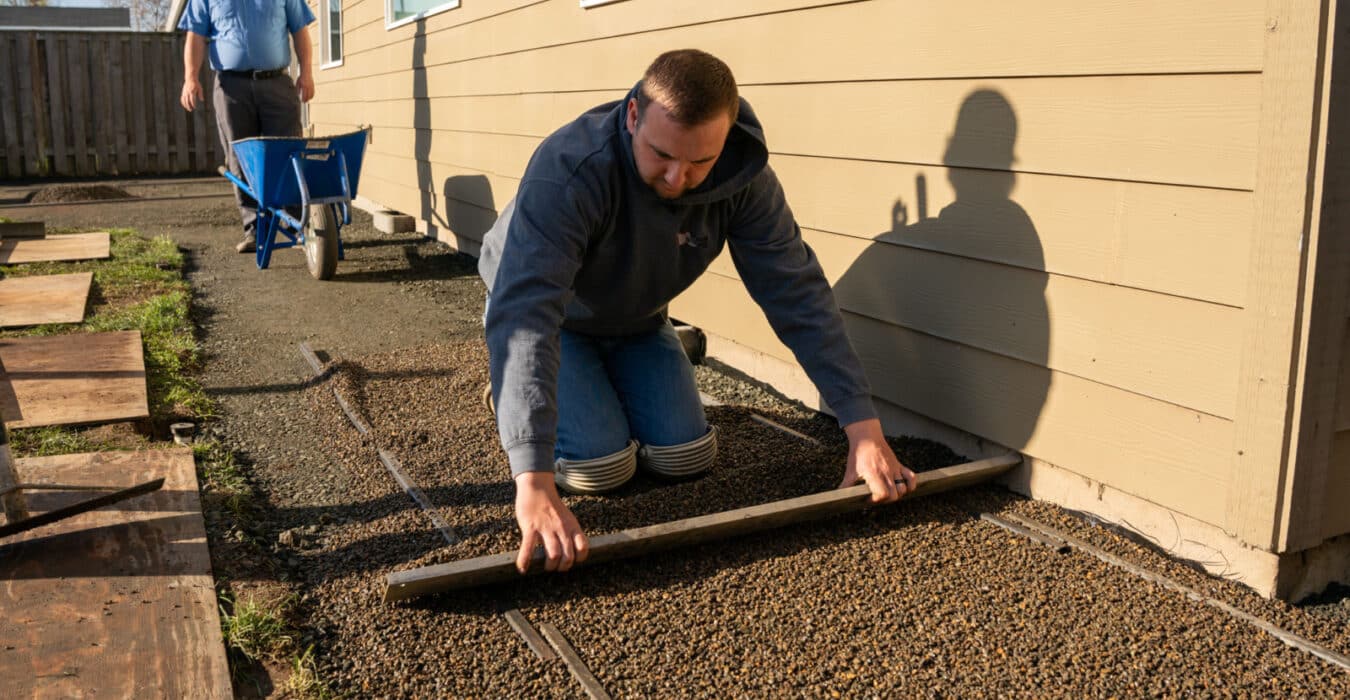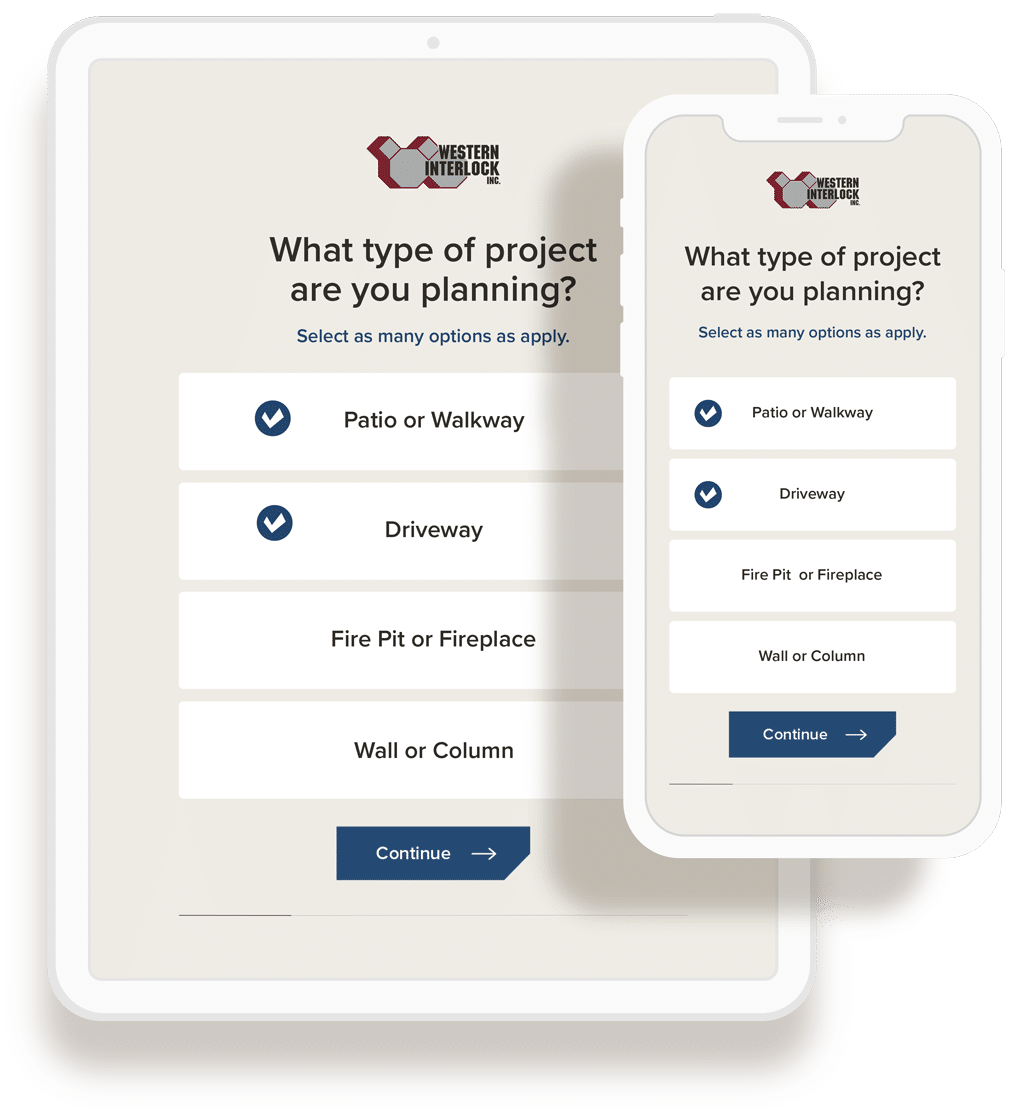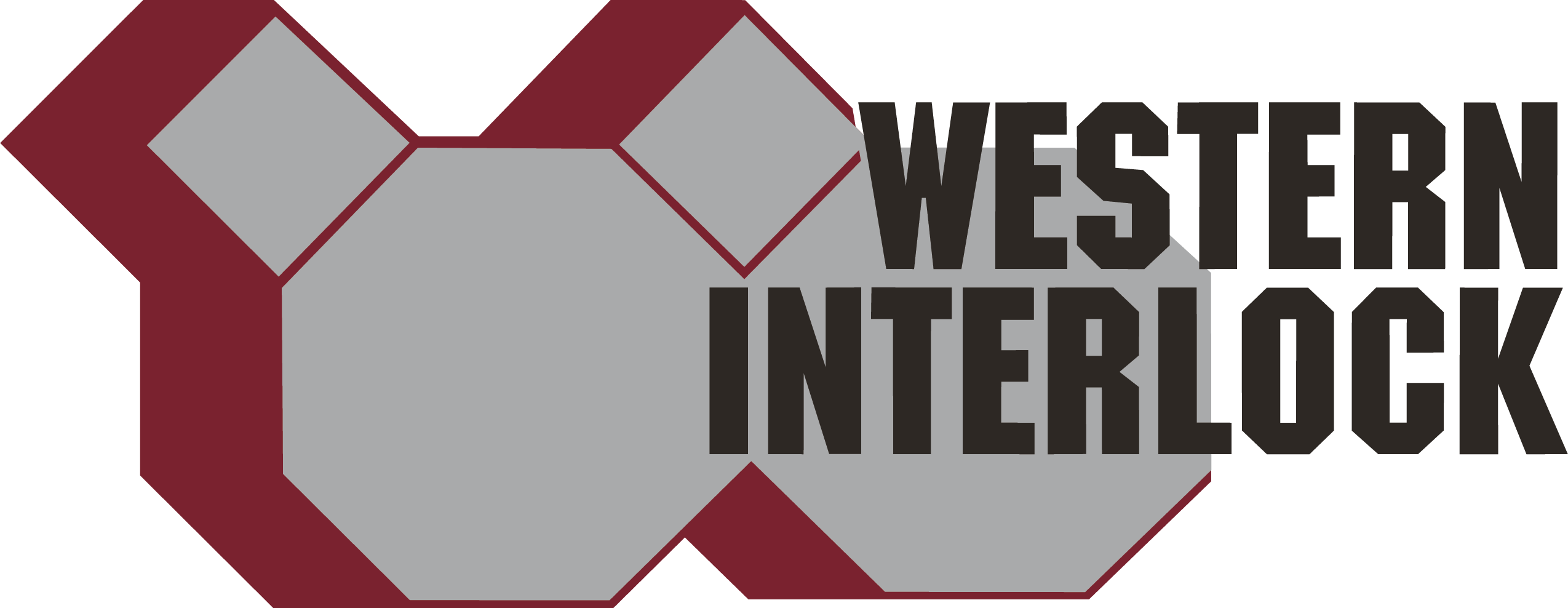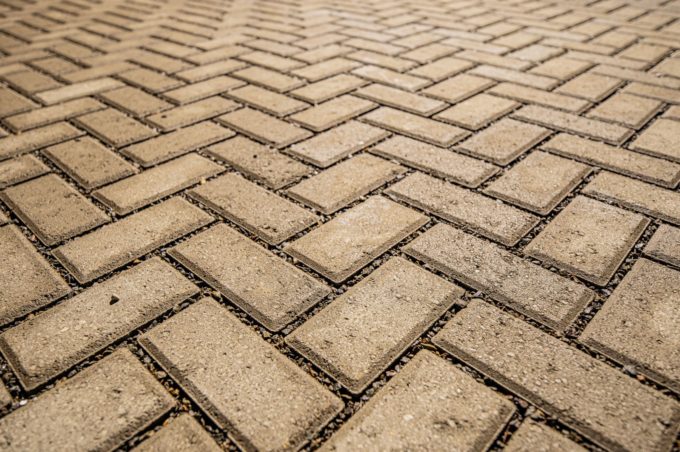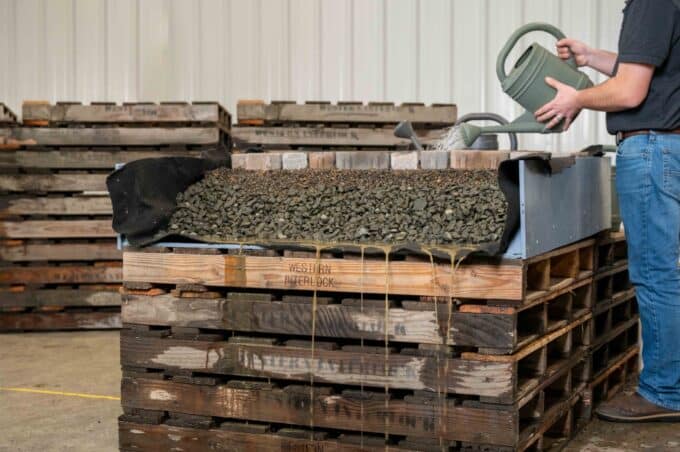Do you want to make sure your paver patio is level? The secret is to ensure you have a good base that’s been appropriately leveled. Leveling, known as screeding, is crucial.
In this blog post, we look at people’s most common questions about screeding.
1. What tools do you use to screed for pavers?
There are a few tools that you need to have on hand before you start screeding for pavers:
Screed board
First, you must have a screed board, such as an aluminum paver screed. This is usually a 2×4 board, but you can use anything with a flat edge that won’t wobble or bend.
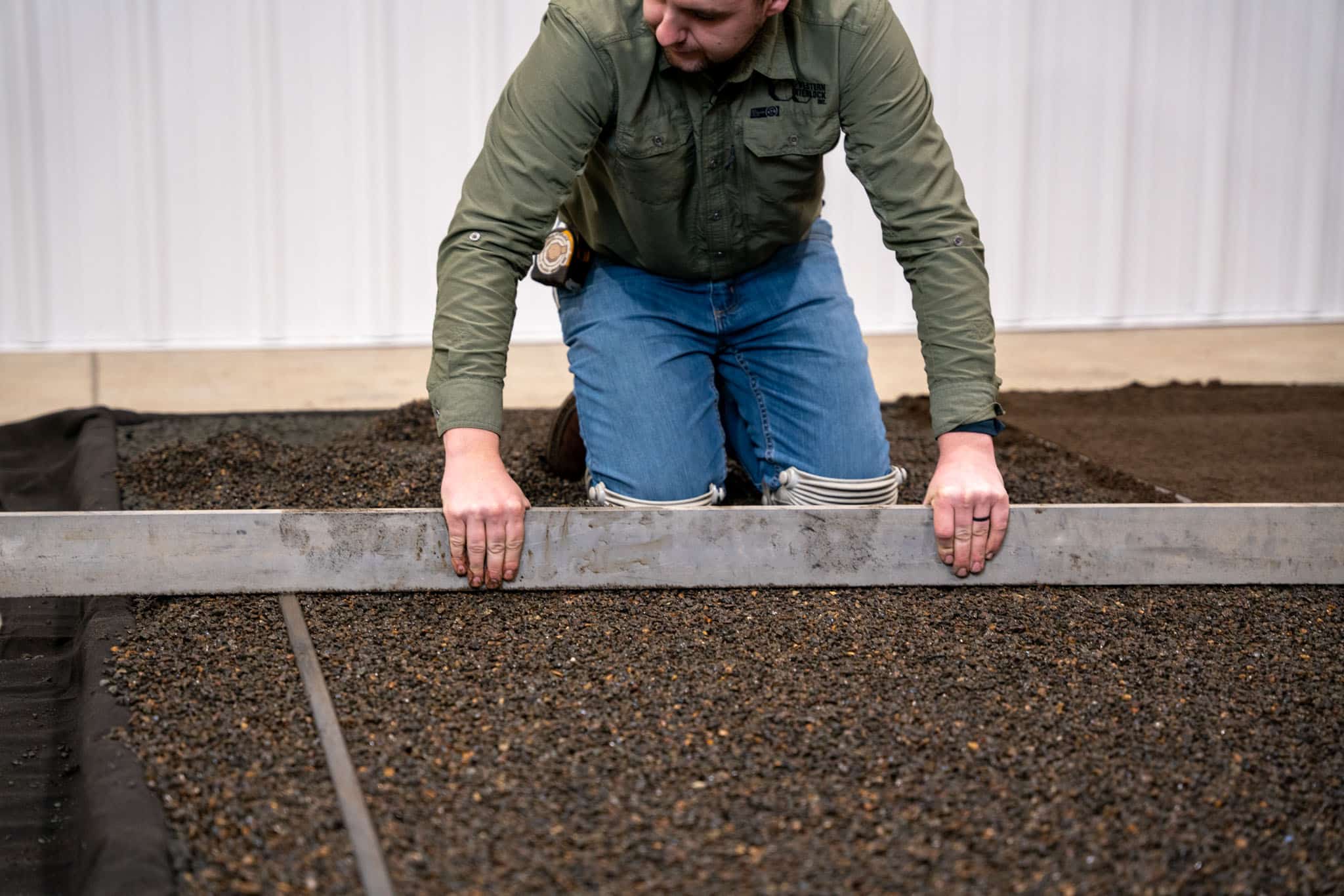
Screed rails
You also need screed bars, or screed rails, to serve as the reference line for your screed depth. Use 3/4″ inner diameter steel black pipe or 1” outside diameter square tubing.
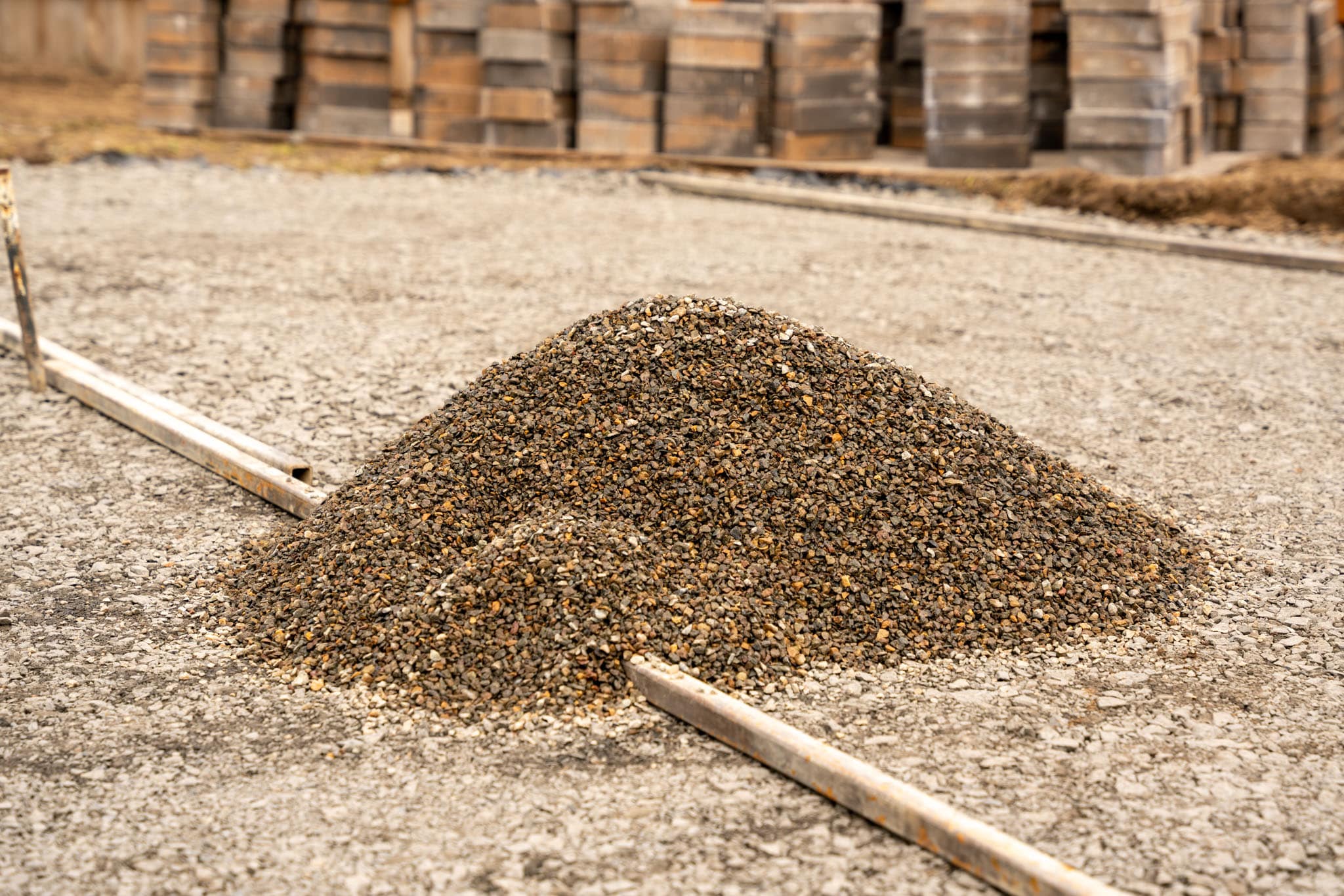
String line
Finally, you need a string line to set and follow the appropriate slope set during excavation.
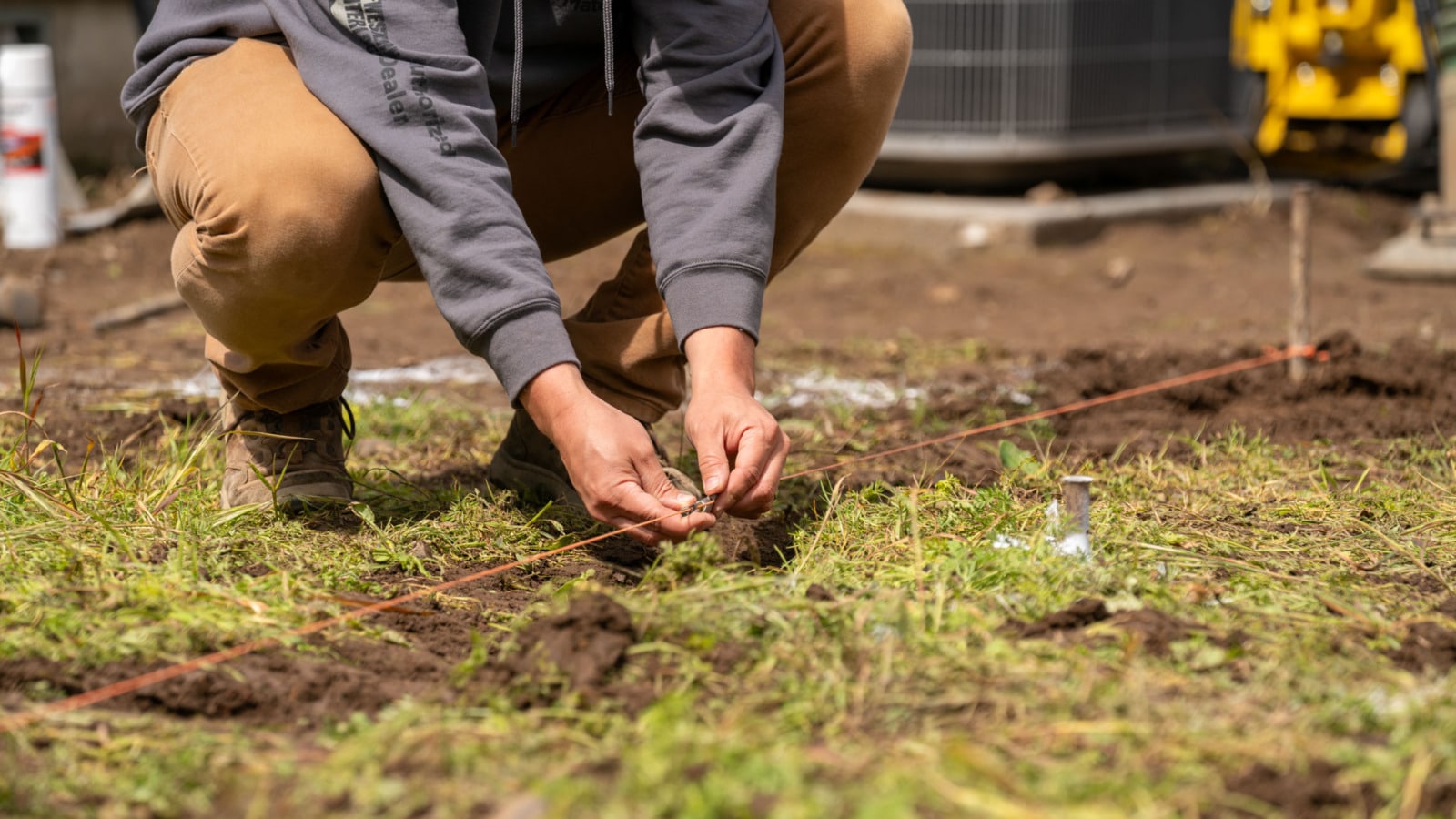
2. Why do you screed before laying paving stones?
Why is it even necessary to screed before laying a hardscape? Here are several simple reasons. Screeding:
- Holds pavers in place
- Allows for easier compaction
- Promotes proper drainage
- Makes joints stable
- Provides stability and structural integrity
- It makes it easier to create a flat, even surface
- Provides flexibility to help avoid pavers cracking and shifting
- It is an integral part of making sure pavers interlock
3. How do you screed sand for a paver patio?
If you are installing a patio, how do you screed? You first need to set up screed guides to screed sand for a paver patio. After they are set up, add a bedding layer of sand or ¼”-10 crushed aggregate, and move the screed back and forth for the most accurate leveling. Finally, remove the screed guides and enjoy the level bedding.
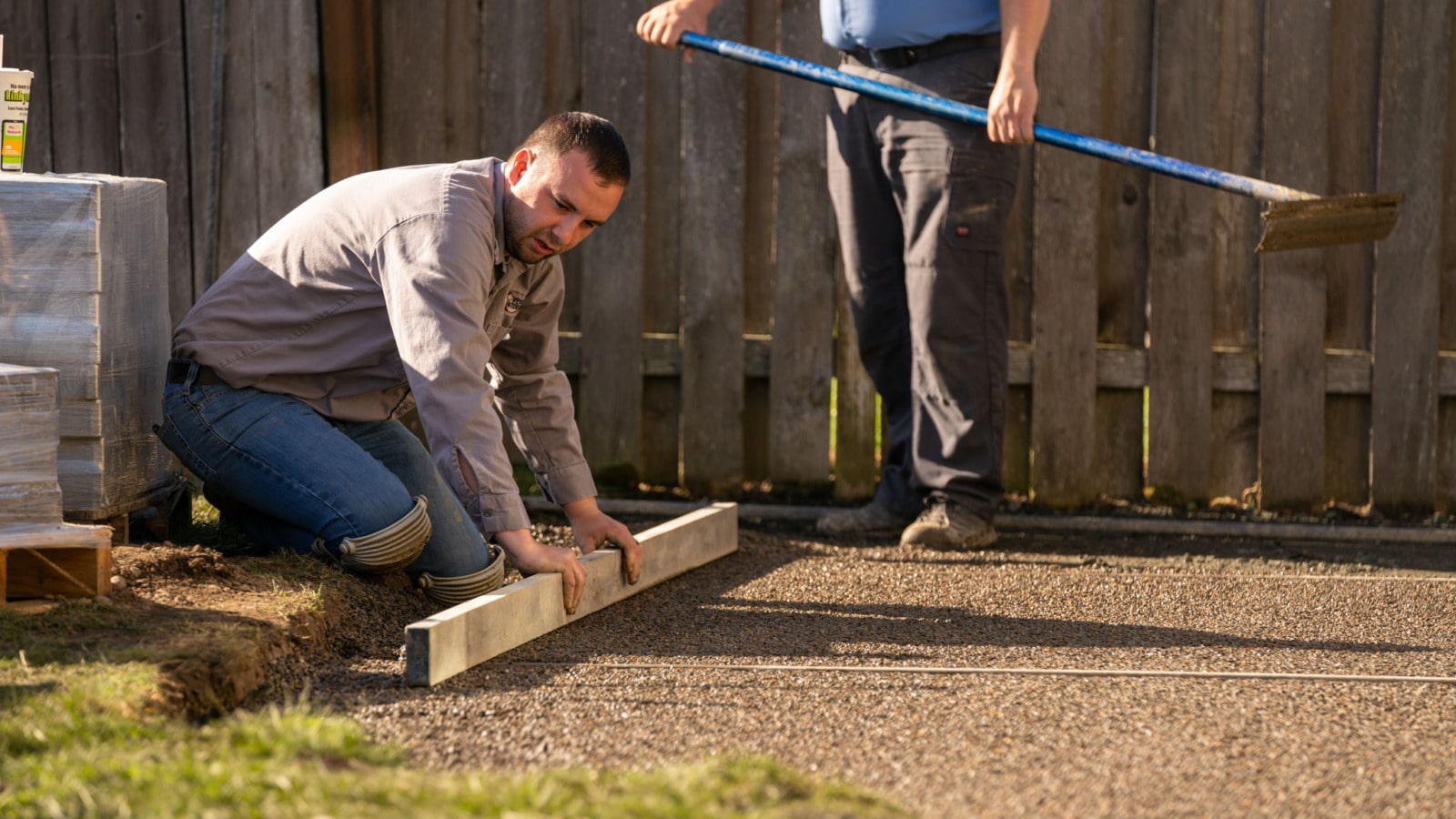
4. What kind of sand do you use for screeding?
So, what kind of sand should you use for screeding? Bedding sand is the traditional option for all applications. Make sure you use bedding sand, not all-purpose sand, masonry sand, or sandbox sand. These options are not as coarse as necessary to be bedding sand. For high-moisture areas needing moderate to high drainage, ¼”-10 crushed aggregate is recommended.
5. Can I use cement under pavers instead of screeding?
Can you use cement as the bedding under your pavers instead of screeding? Yes, you can, but it’s not a substitute for a bedding layer.
If you are installing pavers over concrete, you should still use a layer of bedding sand after filling in any cracks in the concrete, installing a stone border, and laying geofilter fabric down over the concrete.
6. How thick should my screed layer be?
The final common question we hear about screeding for pavers is, “How thick should the screed layer be?”
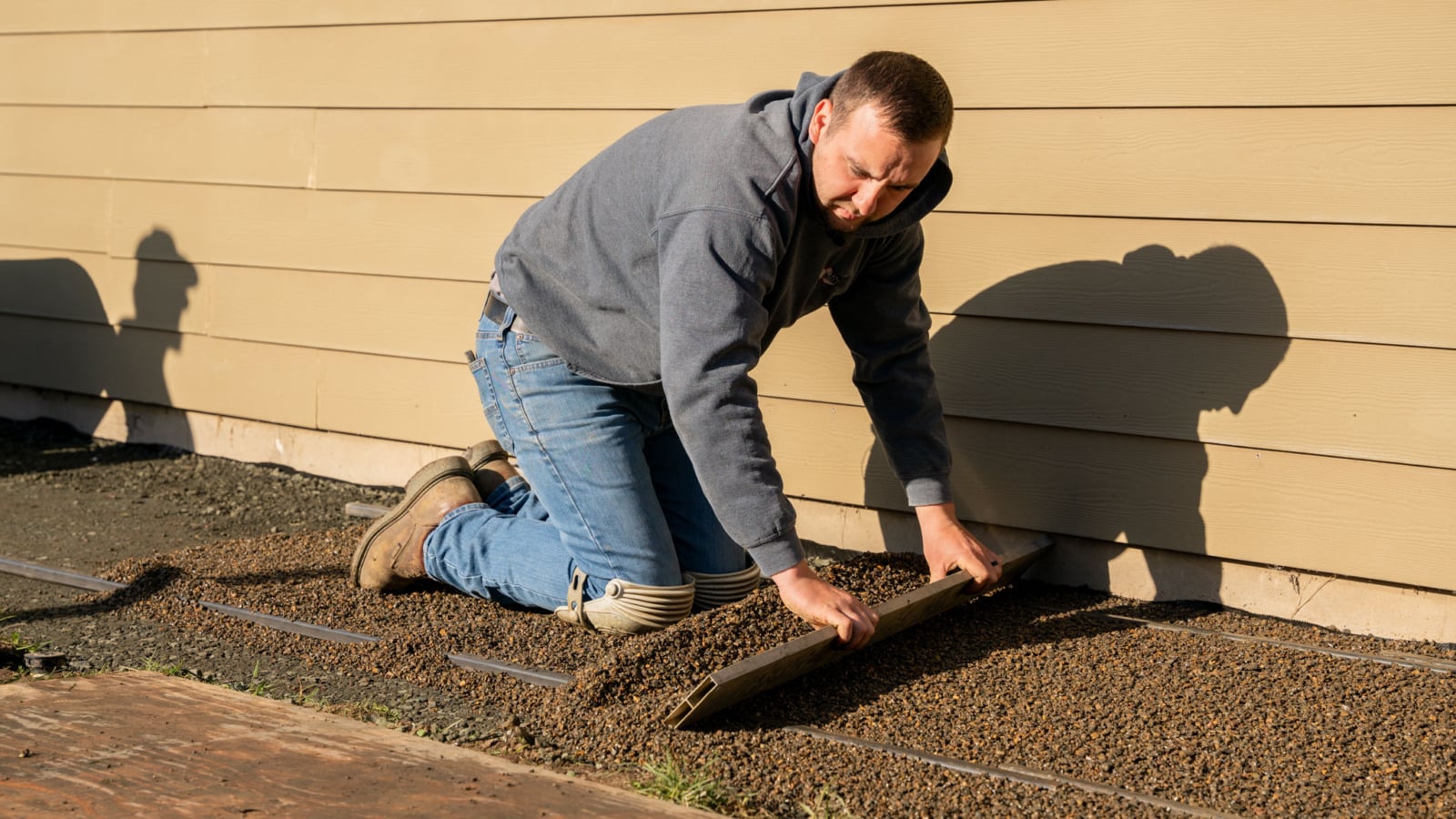
There is a happy medium that you should aim for in the screed layer. A too-thin layer will cause your hardscape to be uneven or too rigid, and a too-thick layer will be too soft, allowing your pavers to shift and sink. Aim for a screed layer that is 1” or 25mm. If you use 1” outside diameter square tubing, you will be good to go.
Download our Planning Guide
For more details on how to plan your paver project, check out our free Project Planning Guide. It will help you through the brainstorming process and give you the tools you need for a successful hardscape installation.


